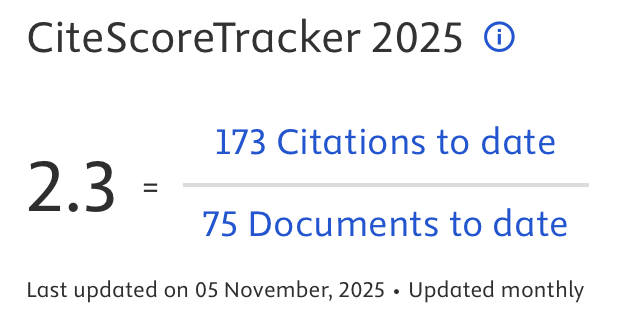HERMENEUTIKA INTERTEKSTUALITAS MUQÂTIL BIN SULAYMÂN
DOI:
https://doi.org/10.14421/qh.2019.2002-01Keywords:
Intertextuality, Muqatil, al-Qur’an, Bible, IsrâîlîyâtAbstract
Intertextuality is one of the contemporary reading theories that discusses texts that cannot be made on their own without relations and relations with other contemporary texts. Intertextuality reading can also be done in reading the Quran. Muqâtil bin Sulaymân is one of the early interpreters who tried to apply intertextuality hermeneutics. The Quran is a continuation of and responds to the scriptures, so he does not hesitate to dialogue with the Quran with the Bible. Most intertextuality hermeneutics built by Muqâtil can be accessed in two aspects. First, the aspects explain things that are not yet clear (mubham), like the names of the characters told in the Quran. Second, the aspect of emphasis is on the historicity and context of the verses of the Quran. This aspect was carried out by Muqâtil by exploring the sources of religion that developed at that time. However, the criticism that needs to be addressed in the method used by Muqâtil is the use of strict non-Islamic history. Muqâtil tends not to notice the process of criticism or materialism in the science of the hadith.
 Abstract viewed: 1482 times
|
Abstract viewed: 1482 times
|
 PDF downloaded = 1744 times
PDF downloaded = 1744 times
References
Adang, Camilla. Muslim Writers on Judaism and the Hebrew Bible: From Ibn Rabban to Ibn Hazm. Leiden: E.J. Brill, 1996.
Allen, Graham. Intertextuality. New York: Routledge, 2006.
Ashur, Muhammad bin. al-Tafsîr wa Rijâlu. Kairo: Dâr al-Salam, 2008.
Bosworth, C.E. The Encyclopaedia of Islam. Leiden: E.J. Brill, 1993.
Dhahabî (al), Muḥammad Husayn. al-Isrâîlîyât fî al-Tafsîr wa al-Ḥadîs. Kairo: Maktabah Wahbah, t.th.
Esack, Farid. The Quran A User’s Guide. Oxford: Oneworld, 2007.
Hajjaj, Jihad Ahmad. “Manhaj al-Imam Muqatil bin Sulaiman al-Balkhi fi Tafsirih”. Tesis-Islamic University of Gaza Palestina, 2010.
Kamal, Muhammad Ali Mustafa. Menelisik Keunikan Tafsir Klasik dan Modern. Wonosobo: Pascasarjana Universitas Sains al-Qur’an, 2012.
Khalikân, Aḥmad bin Muḥammad bin Abî Bakr bin. Wifayât al-A’yân wa Anbâ’ Abnâ’ al-Zamân. Vol. 5. Beirut: Dâr S}âdir, 1968.
Malpas, Jeff dan Hans-Helmuth Gander (ed.). The Routledge Companion to Hermeneutics. New York: Routledge, 2015.
Na’na’a, Ramzi. al-Isrâîlîyât wa Atharuh fî Kutub al-Tafsîr. Beirut: Dâr al-Qalam, 1970.
Neuwirth, Angelika dan Michael A. Sells (ed.). Qur’anic Studies Today. New York: Routledge, 2016.
Raof, Hussein Abdul. Schools of Qur’anic Exegesis: Genesis and Development. New York: Routledge, 2010.
Reeves, John C. (ed.). Bible and Qur’an: Essays in Scriptural Intertextuality,. Atlanta: Soiety of Biblical Literature, 2003.
Sirry, Mun’im. “Muqatil b. Sulayman and Anthropomorphism” dalam Studia Islamica 107. London: Brill, 2012.
_______. Kontroversi Islam Awal: antara Mazhab Tradisionalis dan Revisionis. Bandung: Mizan, 2015.
Sulaymân, Muqatil bin. al-Wujûh wa al-Naẓa’ir fî al-Qur’an al-‘Aẓim. Irak: al-Majid lî al-Thaqafah wa al-Turath, 2006.
_______. Tafsîr Muqâtil bin Sulaymân. Beirut: Muassasah al-Tarikh al-‘Arabi, 2002.
Syamsuddin, Sahiron. Hermeneutika dan Pengembangan Ulumul Qur’an: Edisi Revisi dan Perluasan. Yogyakarta: Nawasea Press, 2017.
Ṭayyâr (al), Musa’ad bin Sulaiman bin Nâs}ir. Tafsîr al-Qur’an bi al-Isrâîlîyât: Naẓroh Taqwimîyah. Majalah Imam al-Syathibi, 2012.
Downloads
Published
How to Cite
Issue
Section
License
Publishing your paper with Jurnal Studi Ilmu-ilmu al-Qur'an dan Hadis means that the author or authors retain the copyright in the paper. Jurnal Studi Ilmu-ilmu al-Qur'an dan Hadis uses license CC-BY-NC-ND or an equivalent license as the optimal license for the publication, distribution, use, and reuse of scholarly works. This license permits anyone to copy and redistribute the material in any medium or format and must give appropriate credit, provide a link to the license, and indicate if changes were made. If you remix, translate, transform or build upon the material you may use it for private use only and not for distribution. Jurnal Studi Ilmu-ilmu al-Qur'an dan Hadis granted an exclusive non-commercial reuse license by the author(s), but the author(s) are able to put the paper onto a website, distribute it to colleagues, give it to students, use it in your thesis, etc, so long as the use is not directed at a commercial advantage or toward private monetary gain. The author(s) can reuse the figures and tables and other information contained in their paper published by Jurnal Studi Ilmu-ilmu al-Qur'an dan Hadis in future papers or work without having to ask anyone for permission, provided that the figures, tables, or other information that is included in the new paper or work properly references the published paper as the source of the figures, tables or other information, and the new paper or work is not direct at a private monetary gain or commercial advantage.
Jurnal Studi Ilmu-ilmu al-Qur'an dan Hadis journal Open Acces articles are distrubuted under the Creative Commons Attribution-NonCommercial-NoDerivatives 4.0 International (CC BY-NC-ND 4.0). Article can be read, copy and redistribute the material ini any medium or format under the following conditions:
Attribution — You must give appropriate credit, provide a link to the license, and indicate if changes were made. You may do so in any reasonable manner, but not in any way that suggests the licensor endorses you or your use.
NonCommercial — You may not use the material for commercial purposes.
NoDerivatives — If you remix, transform, or build upon the material, you may not distribute the modified material.









